Your fitness wearable collects intimate biometric data including heart rate, sleep patterns, and activity metrics that need robust protection through AES encryption and role-based access controls. Most devices transmit data via Bluetooth and Wi-Fi channels that can be intercepted by malicious actors, while current privacy laws like HIPAA don’t cover consumer wearables. You’ll want to enable automatic security updates and understand that companies can sell your health information to third parties. Extensive security frameworks can help safeguard your most sensitive physiological data.
Understanding Biometric Data Collection in Fitness Wearables
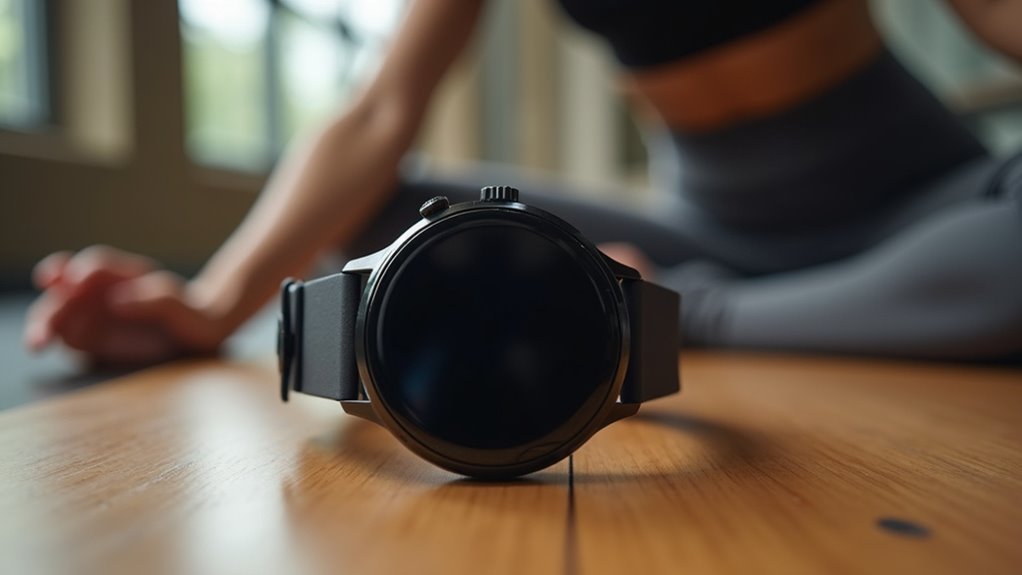
When you strap on a fitness wearable, you’re carrying sophisticated sensors that continuously monitor your body’s essential signs and physical activity.
These devices collect diverse biometric data through specialized sensors. Photoplethysmography (PPG) sensors measure your heart rate by detecting light absorption changes in blood flow, while pulse oximetry determines your blood oxygen saturation levels.
Modern fitness trackers use advanced PPG and pulse oximetry sensors to precisely monitor heart rate and blood oxygen levels in real-time.
Accelerometers track your movement in three dimensions, counting steps and measuring physical activity. Some wearables monitor body temperature and use bioimpedance sensors to estimate body composition and fat percentage.
Electrodermal activity sensors measure stress responses through skin conductance changes. Your device also tracks sleep patterns to understand rest cycles.
This thorough data collection creates a detailed picture of your health and fitness metrics for personalized insights. The increasing sophistication of these wearables enhances their potential applications beyond fitness tracking.
Encryption Protocols for Protecting Health Information
As your fitness wearable continuously collects sensitive biometric data, encryption protocols become your primary defense against data breaches and unauthorized access.
You’ll need robust algorithms that balance security with your device’s limited processing power. AES (Advanced Encryption Standard) offers excellent security and efficiency for advanced smartwatches, while ECC (Elliptic Curve Cryptography) provides high security with shorter key lengths—perfect for resource-constrained devices.
If you’re working with legacy systems, 3DES guarantees compatibility, though it’s less secure than modern alternatives. For specialized medical applications, consider FPE (Format-Preserving Encryption) to protect structured data.
Twofish presents a publicly available alternative similar to AES, making it ideal for open-source projects. Your encryption choice should align with HIPAA compliance requirements and your device’s specific computational capabilities. The ECDH protocol enables secure session key establishment between your wearable device and healthcare servers for ongoing data transmission.
Access Control Mechanisms for Sensitive Biometric Templates
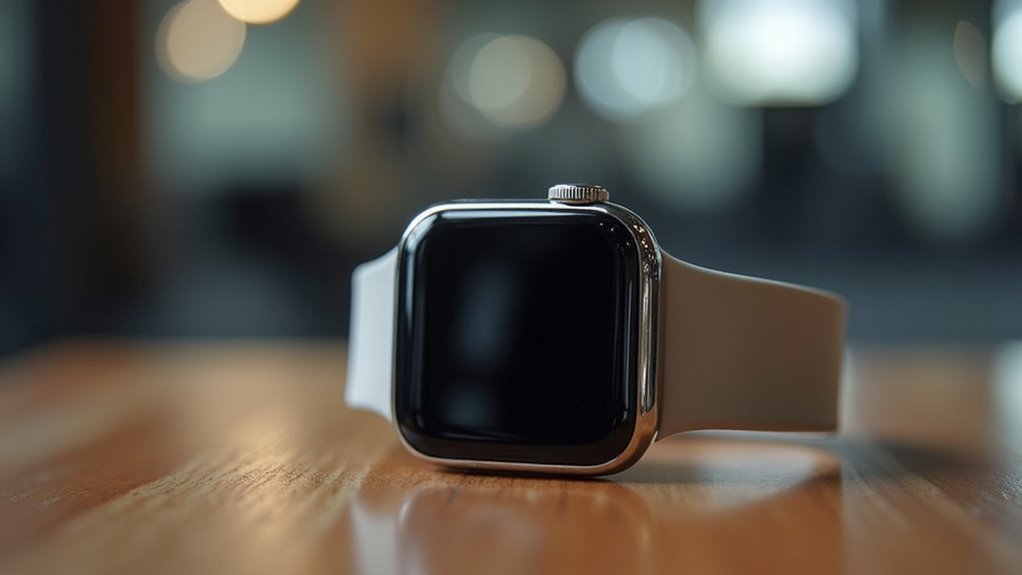
Beyond encrypting your biometric data, you’ll need robust access control mechanisms that determine who can view, modify, or use your sensitive biometric templates. Your fitness wearable should implement strict controls to prevent unauthorized access while maintaining functionality.
Effective access control for your biometric templates involves:
Implementing layered security controls ensures only authorized personnel can access your sensitive biometric information while preserving device functionality.
- Role-based permissions that limit template access to essential functions only, following least privilege principles to minimize internal threat risks.
- Strong administrator authentication requiring multi-factor verification before anyone can access or modify your stored biometric data.
- Comprehensive audit logging that tracks all access attempts to your templates, enabling early detection of unauthorized usage patterns.
You’ll want systems that store templates locally on your device rather than centralized servers, reducing exposure points while maintaining GDPR compliance through decentralized storage models. Modern fitness wearables should implement liveness detection capabilities to ensure only legitimate users can authenticate and access their biometric templates.
Software Update Requirements and Security Patch Management
While your fitness wearable’s access controls protect against unauthorized users, keeping your device’s software current through regular updates forms another critical defense layer.
You’ll receive security patches that address newly discovered vulnerabilities, preventing hackers from exploiting weaknesses in your device’s Bluetooth, Wi-Fi, and authentication systems. These updates strengthen encryption algorithms protecting your biometric data and improve overall system stability.
You should enable automatic updates whenever possible to guarantee consistent patch application without manual intervention. However, verify that updates are authentic before installation to prevent malicious code injection.
Don’t delay updates due to convenience concerns—postponing patches leaves your sensitive health data exposed to emerging threats. Manufacturers regularly release firmware updates specifically targeting cybersecurity vulnerabilities that could compromise your personal information.
Regular updates also protect against cloud storage vulnerabilities that could expose your synchronized biometric data to unauthorized access across connected services.
Secure Server Infrastructure for Data Storage

Your fitness wearable’s updated software connects to remote servers that house your most sensitive biometric information, making the security of these storage systems paramount to protecting your personal data.
Server infrastructure security requires multiple defensive layers to safeguard your biometric data from unauthorized access. Companies must implement robust access controls and network segmentation to isolate your sensitive information from potential threats.
Critical server security measures include:
- Segmented Networks – Your biometric data lives in isolated network sections, preventing lateral movement during security breaches.
- Multi-Factor Authentication – Server access requires multiple verification steps, ensuring only authorized personnel can reach your data.
- Regular Security Audits – Continuous monitoring and testing identify vulnerabilities before attackers exploit them.
These security measures work together with standards compliance and secure messaging protocols to create thorough protection for your stored biometric information. However, even the most secure centralized databases present inherent risks because large data volumes create attractive targets for cybercriminals seeking to compromise multiple users simultaneously.
User Consent Frameworks and Data Ownership Rights
When fitness wearables collect your biometric data, companies must obtain your explicit consent through transparent frameworks that clearly explain what information they’re gathering and how they’ll use it.
You retain ownership of your biometric data and must have control over how it’s shared, stored, and accessed. Companies should provide user-friendly privacy policies during device setup, allowing you to customize data-sharing preferences like Apple Watch and Fitbit do.
You have the right to access, download, and transfer your data between devices without loss. You can revoke consent at any time and correct any inaccuracies in your records.
Companies must disclose potential third-party sharing and guarantee your participation remains voluntary, especially in workplace wellness programs where coercion could violate employment laws. Organizations must conduct Data Protection Impact Assessments before implementing new wearable fitness programs to identify and mitigate privacy risks specific to biometric data collection.
HIPAA and GDPR Compliance Challenges for Wearable Manufacturers
Fitness wearable manufacturers face a complex web of regulatory requirements that go far beyond simple user consent agreements.
When your devices collect health data that qualifies as Protected Health Information under HIPAA or personal data from EU residents under GDPR, you’re traversing two distinct yet equally demanding frameworks.
The primary compliance challenges you’ll encounter include:
- Technical Implementation Barriers – Meeting encryption standards, access controls, and secure storage requirements across different regulatory jurisdictions.
- International Compliance Coordination – Simultaneously satisfying US HIPAA requirements and EU GDPR mandates with potentially conflicting technical specifications.
- Ongoing Regulatory Adaptation – Keeping pace with evolving regulations while maintaining secure data synchronization between devices and external systems.
You must also guarantee third-party vendors meet compliance standards and implement robust cybersecurity safeguards. Whether your wearable devices require HIPAA compliance depends entirely on the use case and the specific type of health data being collected and processed.
Data Exposure Risks in Health Applications
While regulatory compliance creates foundational challenges, the actual exposure of biometric data presents far more immediate and devastating consequences for both users and manufacturers.
You’re facing unprecedented vulnerability as healthcare data breaches exposed 41.2 million records in 2019 alone, with costs remaining the highest among all business sectors for fourteen consecutive years.
Your fitness wearable creates extensive attack surfaces through hacking incidents, email vulnerabilities, and third-party app integrations.
When your device is lost or stolen, biometric data becomes directly exposed. Unlike passwords, you can’t simply reset compromised biometric information.
You’ll encounter identity theft, medical profiling, and targeted cyberattacks tailored to your health conditions. Healthcare organizations face a 1 in 42 chance of being targeted by ransomware in any given quarter.
With 79% of consumers expressing privacy concerns about health applications, trust erosion threatens widespread adoption of these beneficial technologies.
Technical Vulnerabilities and Exploitation Prevention
Your fitness wearable’s Bluetooth connection creates multiple attack vectors that hackers can exploit to access your biometric data.
Common vulnerabilities include weak device authentication, unencrypted data transmission, and susceptibility to man-in-the-middle attacks during pairing processes.
You’ll need to understand these technical weaknesses and implement specific prevention strategies to protect your sensitive health information from unauthorized access. Regular software updates are necessary to address security vulnerabilities and should be downloaded promptly to maintain protection against evolving threats.
Common Security Vulnerabilities
Because fitness wearables create multiple communication pathways between your device, smartphone, and cloud servers, they introduce numerous attack surfaces that cybercriminals can exploit.
Your device’s firmware often exhibits poor security controls, making it vulnerable to malicious code injection during updates or Bluetooth pairing processes.
The most critical vulnerabilities you’ll encounter include:
- Weak Bluetooth authentication – Passive attacks can intercept your data during pairing processes
- Insecure firmware updates – Attackers can inject malicious code when your device downloads patches
- Open interfaces – Interoperability features create entry points for hackers targeting the weakest system component
If you’re using payment-enabled wearables, these vulnerabilities become even more dangerous since attackers could potentially access your financial accounts through compromised devices. Military organizations have recognized these risks and implemented fitness tracker bans on their bases due to serious geolocation data security concerns.
Exploitation Prevention Strategies
Five fundamental security layers form the foundation of effective biometric data protection in fitness wearables.
You’ll need robust encryption protocols that safeguard your biometric data both during storage and transmission, preventing exploitation if attackers intercept communications or breach databases.
Implement multi-factor authentication combining your biometric features with strong PINs or passwords to create multiple security barriers.
You should regularly update your device’s firmware and authentication credentials to patch emerging vulnerabilities before attackers can exploit them.
Configure granular privacy settings to control which biometric sensors remain active and what data gets shared with third-party applications. Consider that compromised biometric data creates long-term security issues since these identifiers cannot be changed like traditional passwords if breached.
Finally, you’ll want to enable pseudonymisation techniques that separate your biometric identifiers from personal information, making stolen data considerably less valuable to potential attackers while maintaining device functionality.
Real-Time Biometric Monitoring Security Considerations
When you’re using fitness wearables for real-time biometric monitoring, you’re exposing your sensitive health data to potential interception during transmission between your device and cloud servers.
You’ll need robust access controls that can authenticate and authorize users continuously without creating bottlenecks in the real-time data flow.
Your continuous monitoring setup also amplifies security risks since it creates persistent data streams that hackers can target for extended periods, unlike one-time data transfers. These devices utilize state-of-the-art encryption technologies to safeguard your biometric information and ensure secure access to your health data.
Data Transmission Vulnerabilities
Data transmission vulnerabilities represent one of the most critical security challenges facing fitness wearable users today. Your device’s biometric data becomes exposed when transmitted through unsecured channels, making it an attractive target for cybercriminals.
You’re particularly vulnerable through these transmission methods:
- Bluetooth connections – Hackers can exploit weak encryption protocols to intercept your health data during device-to-smartphone transfers.
- Unencrypted signals – Your biometric information travels in plain text, allowing unauthorized parties to decode sensitive health metrics.
- Public network exposure – When your wearable syncs data over public Wi-Fi, you’re risking interception by malicious actors.
Malware can also spread through these transmission channels, potentially infecting your connected devices.
You’ll need robust encryption protocols and secure pairing processes to protect your valuable biometric data from unauthorized access. Major incidents like the Under Armour MyFitnessPal breach demonstrate how vulnerable fitness device data can be when security measures fail.
Real-Time Access Controls
While your fitness wearable continuously streams biometric data, implementing robust real-time access controls becomes essential for protecting this sensitive information from unauthorized viewing or manipulation.
You’ll need multi-factor authentication and biometric verification like fingerprint or facial recognition to secure device access. Role-based permissions guarantee only authorized users can view or modify your data, while time-based restrictions limit access to predefined windows.
Your device should use threshold-based alerts with encrypted communication channels for health notifications. API access controls enforce strict authentication for data retrieval applications.
Consider implementing device lockout mechanisms after repeated failed attempts and temporary access tokens for emergency situations. These layered security measures protect your real-time biometric streams while maintaining accessibility for legitimate users and healthcare providers. Advanced devices like head impact monitors can collect particularly sensitive data requiring enhanced security protocols.
Continuous Monitoring Risks
Although continuous biometric monitoring offers valuable health insights, it creates unprecedented security vulnerabilities that expose your most intimate physiological data. Your wearable generates massive volumes of detailed information including heart rate patterns, sleep cycles, stress indicators, and location data that create extensive behavioral profiles.
Three critical risks you’ll face with continuous monitoring include:
- Re-identification attacks – Studies show 86-100% success rates in identifying users from supposedly anonymous data, requiring as little as 1-300 seconds of sensor readings.
- Real-time transmission vulnerabilities – Wireless protocols like Bluetooth expose your biometric streams to interception and man-in-the-middle attacks.
- Longitudinal profiling exposure – Continuous data collection enables deep physiological fingerprinting that persists even when combined with metadata like geolocation.
Unlike physiological monitoring which tracks health indicators, biometric devices capture unique identifiers that fundamentally differ in their security implications and potential for permanent compromise.
Regulatory Gaps in Wearable Device Privacy Protection
As fitness wearables collect increasingly sensitive biometric data, regulatory frameworks struggle to keep pace with rapidly evolving technology.
You’ll find significant disparities between regional standards that create compliance gaps and confusion for manufacturers. While the EU’s GDPR now covers biometric devices previously outside medical regulations, and U.S. HIPAA extends to diagnostic wearables, enforcement remains inconsistent globally.
You’re operating in an environment where 19 U.S. states have enacted extensive privacy laws, yet regulatory gaps still allow inconsistent data protection across regions. Asian and South American countries are drafting unique frameworks for data protection that further complicate global compliance.
This patchwork approach increases your risk of data leaks and misuse. Early-stage companies face mounting compliance costs as they navigate complex, evolving requirements for encryption, consent protocols, and breach notification—often within 72 hours in the EU.
Advanced Security Framework Development Strategies
Given the regulatory inconsistencies and compliance challenges outlined above, you need an extensive security framework that goes beyond basic privacy requirements to establish robust protection for biometric data.
Your framework should implement multi-layered encryption using AES-256 protocols for data in transit and at rest, while managing encryption keys through hardware security modules.
You’ll also need dynamic authentication systems with multi-factor verification and role-based access controls to restrict unauthorized personnel access.
Here are three essential components for advanced framework development:
- Real-time threat detection systems that monitor anomalous data access patterns and trigger immediate alerts.
- Automated data lifecycle management with predefined retention policies and scheduled deletion mechanisms.
- Continuous compliance monitoring that aligns with evolving regulations like GDPR and HIPAA while maintaining audit trails.
Regular penetration testing guarantees your framework remains resilient against emerging threats. Since HIPAA does not apply to manufacturers, your security framework must compensate for these regulatory gaps through enhanced protective measures that exceed minimum compliance standards.
User Education and Privacy Risk Awareness Programs
You need to understand exactly what biometric data your fitness wearable collects and how it’s used before you can protect your privacy effectively.
Recognizing potential threats like unauthorized data sharing, weak encryption, or surveillance helps you make informed decisions about which devices to trust. Modern devices use PPG sensors to monitor heart rate and other physiological data, which creates additional data points that require protection.
Implementing protective measures such as strong passwords, regular software updates, and careful privacy setting management puts you in control of your sensitive health information.
Understanding Data Collection
When you strap on your fitness wearable, you’re not just tracking steps—you’re creating a detailed digital profile of your most intimate biological data. Your device continuously monitors heart rate through photoplethysmography, measures oxygen saturation via pulse oximetry, and tracks body composition using bioimpedance technology.
This biometric information gets used for:
- Health monitoring – Creating personalized fitness plans and tracking wellness trends
- Insurance verification – Detecting fraudulent claims through activity data analysis
- Data monetization – Sharing aggregated health insights with third-party companies
You’ll find most wearables store this sensitive data locally without encryption, creating vulnerability risks. These devices collect immutable characteristics like fingerprint patterns and facial structure data that cannot be changed if compromised, making security breaches particularly concerning for long-term privacy.
Understanding these collection methods helps you make informed decisions about which devices you trust with your biological information and what privacy settings you should activate.
Recognizing Privacy Threats
Learning about data collection methods only scratches the surface—you must also recognize the specific privacy threats that emerge from wearing these devices daily.
Your fitness tracker collects highly sensitive biometric data, including heart rate, sleep patterns, and menstrual cycles, which can be exploited if compromised. Current privacy laws like HIPAA don’t protect health data from wearables, leaving you with limited legal recourse.
You’re also vulnerable to data sharing practices where companies sell your information to third parties for advertising. Big tech companies can connect your wearable data across multiple devices and services to create comprehensive profiles of your behavior and preferences.
Recent security breaches have exposed millions of records, proving these devices aren’t immune to cyber threats. Understanding these risks helps you make informed decisions about sharing personal health data and choosing devices with stronger privacy protections.
Implementing Protective Measures
Since fitness wearable manufacturers often fall short in protecting your biometric data, you’ll need to take an active role in safeguarding your personal information through targeted education and awareness programs.
Understanding how your device collects, stores, and uses biometric data is vital. You should learn about potential risks like data theft and identity theft through case studies and breach statistics. With 70 million people in the United States already using fitness trackers, the scale of potential data vulnerability continues to grow exponentially.
Interactive tutorials, videos, and quizzes can help you master privacy settings configuration.
Here are three essential protective measures you can implement:
- Enable strong authentication methods – Use biometric or multifactor authentication when available
- Limit data sharing – Disable non-essential permissions and avoid posting wearable data on social media
- Stay updated – Regularly update firmware and participate in privacy awareness campaigns to learn about emerging threats
Market Growth Potential Through Enhanced Security Measures
As the wearable fitness technology market rockets from USD 15.06 billion in 2025 to a projected USD 39.06 billion by 2035, enhanced security measures aren’t just protecting user data—they’re driving unprecedented growth. You’re witnessing biometric wearables experiencing the fastest expansion at 15.39% CAGR, powered by consumer trust in secure devices.
| Security Feature | Market Impact | Growth Driver |
|---|---|---|
| Biometric Authentication | Replaces traditional passwords | User convenience |
| AI Anomaly Detection | Prevents data breaches | Consumer confidence |
| Encrypted Transmission | Guarantees GDPR/HIPAA compliance | Regulatory requirements |
| Advanced Sensors | Accurate health monitoring | Healthcare adoption |
You’ll find that robust security attracts new customer segments, including elderly users and chronic condition patients, while healthcare partnerships enable secure remote monitoring, accelerating market penetration across demographics. The market is experiencing significant momentum as wearable technology becomes integrated with mobile devices, expanding opportunities in multimedia applications and virtual reality interfaces.
Frequently Asked Questions
Can Biometric Data From Fitness Wearables Be Used Against Me in Insurance Claims?
Yes, your biometric data from fitness wearables can be used against you in insurance claims. Insurers may request this data to detect fraud or challenge your claimed injuries, and it’s not protected by HIPAA.
What Happens to My Health Data if the Wearable Company Goes Bankrupt?
Your health data becomes a business asset that’s sold to new owners during bankruptcy. You’ll lose control over privacy terms, and buyers aren’t required to maintain original protections or deletion promises.
How Do I Permanently Delete All Biometric Data From My Fitness Device?
Factory reset your device first, then delete data from your companion app and linked health apps. Contact your service provider to request complete account deletion, which removes cloud backups within 30-90 days.
Can Employers Access My Fitness Wearable Data Without My Explicit Permission?
No, employers can’t access your fitness wearable data without your explicit permission. They must obtain informed consent, comply with ADA confidentiality requirements, and clearly explain what data they’ll collect and use.
Which Fitness Wearable Brands Have the Strongest Data Security Track Records?
You’ll find Apple Watch and Garmin lead with strongest security track records, offering robust encryption and extensive privacy controls. Polar also provides excellent user-controlled data sharing, while Fitbit benefits from Google’s enhanced security measures.
In Summary
You’ll need to prioritize thorough security measures to protect your biometric data in fitness wearables. Implement strong encryption protocols, establish robust access controls, and guarantee regular software updates. You should demand transparency from manufacturers about their data storage practices and understand regulatory limitations. By staying informed about security risks and advocating for better privacy protections, you’ll help drive market improvements while safeguarding your personal health information.

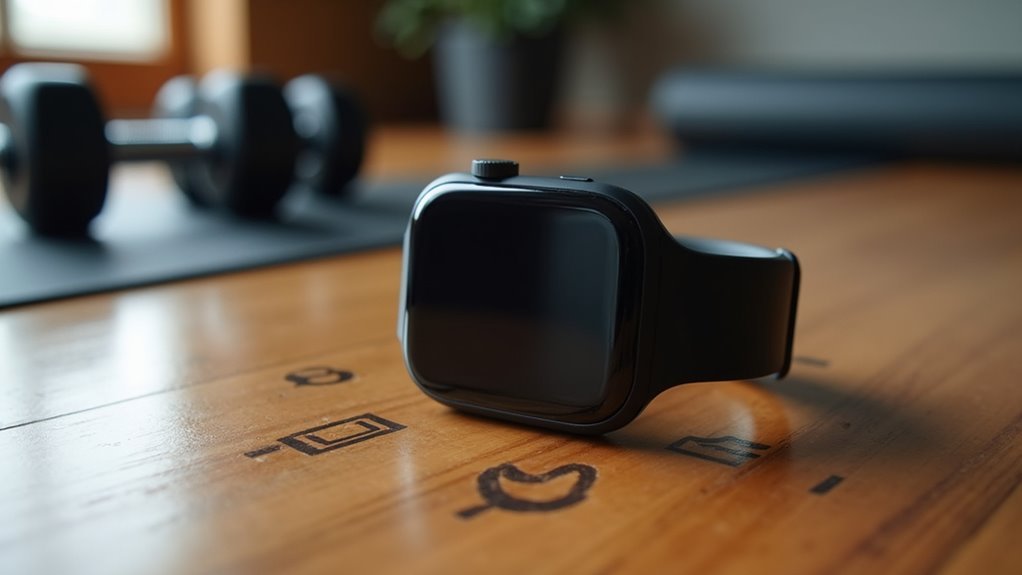
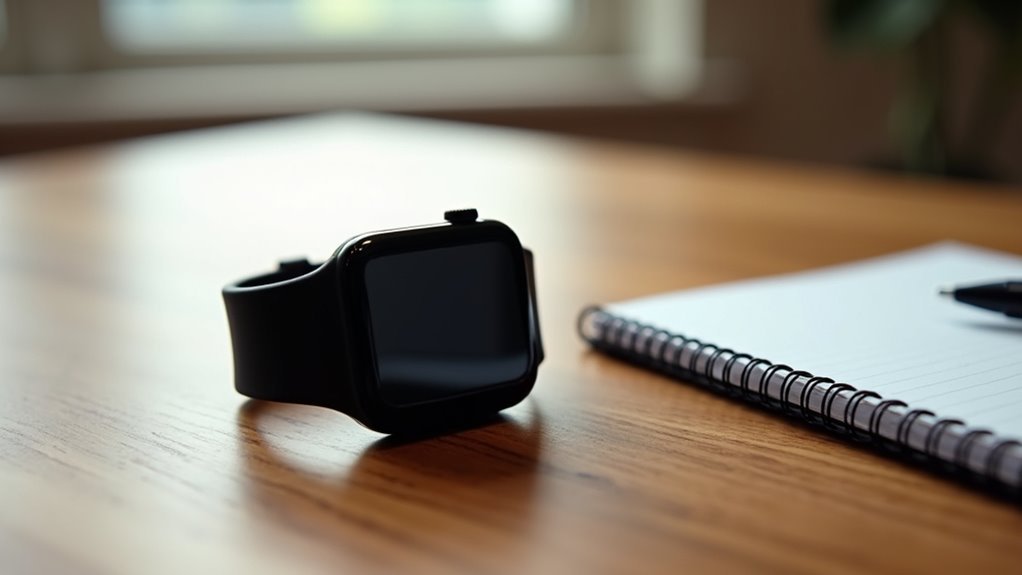
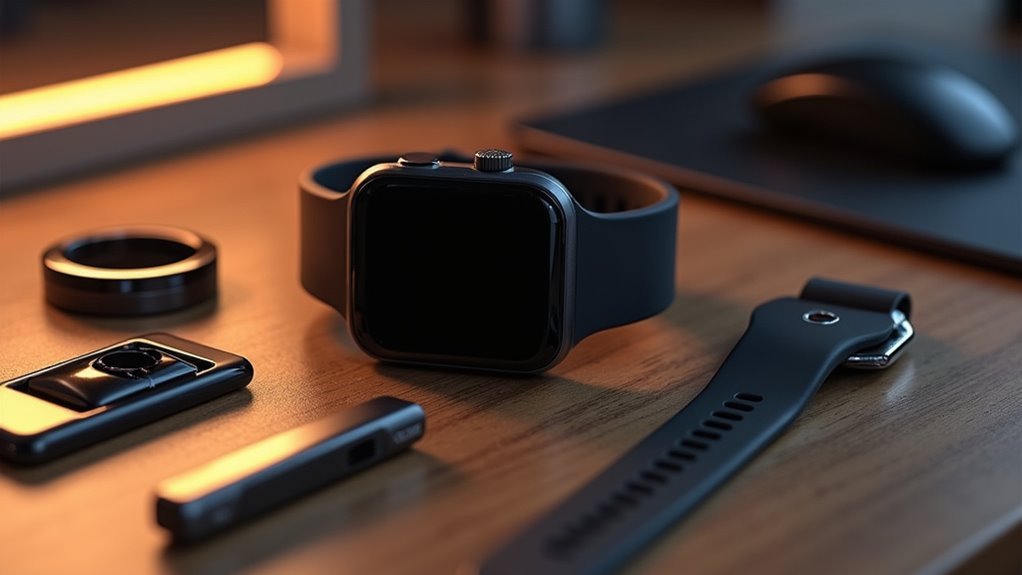
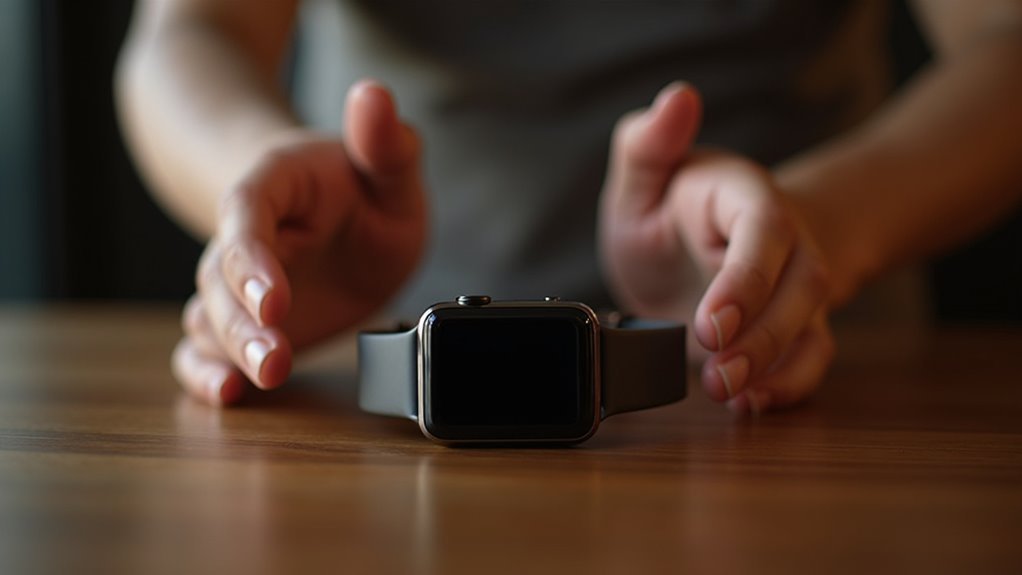
Leave a Reply